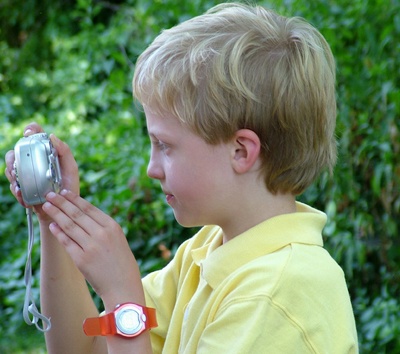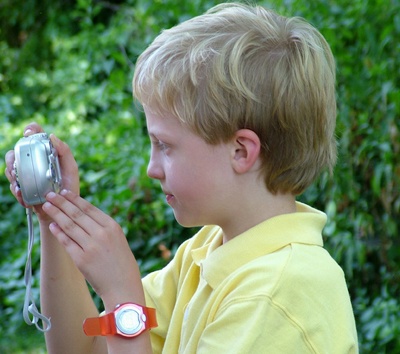A Closer Look: Pivotal Response Training (PRT)
Overview
Pivotal Response Training (PRT) is a variation of Applied Behavioral Analysis (ABA) type therapy. It focuses on more comprehensive “pivotal” areas such as increasing a child’s motivation to learn, initiate communication, and monitor their own behaviors. This focus on motivation is crucial: a child who is motivated to change their behavior will experience more success. By focusing on critical over-arching areas, the effects of treatment can carry over into many aspects of a child’s behavior and skills including social, communicative, and academic. FREE Download: Language Builder Picture Cards
FREE Download: Language Builder Picture Cards
In order to motivate children, PRT is typically play-based and the therapist lets the child initiate activities such as what game to play, what to talk about, or what to learn. Tasks are varied and children are given natural reinforcers that relate to the current situation: such as asking appropriately for a toy and then being handed that toy.
PRT was developed by Drs. Robert and Lynn Koegel at the Koegel Autism Center at the University of California, Santa Barbara. The Center provides professional training, certification, manuals, books, and other tools for learning PRT.

How Does PRT Work?
PRT is an intervention that is incorporated into the day-to-day interactions of the child with family members, peers, teachers, and other professionals. Each program is carefully customized to the needs of a specific child.
The basic components of PRT include:
- Treatment that takes place in the natural environment: home, with peers, and in school
- Family involvement.
- Coordination of treatment across all environments.
- Reatment focused on pivotal areas.
PRT evolved out of the broader arena of ABA in order to better fit the specific needs of children with autism. PRT is less drill-like and more motivating and flexible. It includes task variation so that children stay engaged and easy and hard tasks are alternated so that children can continue to gain confidence and not get frustrated by increasingly harder tasks. Another essential component of PRT is reinforcing children when they are trying hard to produce the desired result, even if they fail to complete the task perfectly.
The Pivotal Areas of focus in PRT are:
- Motivation
- Working with multiple cues to encourage behavior
- Encouraging initiations by the child
- Self-management
- Empathy development
Formal PRT programs typically involve a minimum of 25 hours each week. Each session focuses on language, play, and social skills targeted toward the unique needs of the child. Activities are carried out in both structured and more informal interactions. Therapists, teachers, parents, siblings, and friends of children with autism can all become involved in PRT treatment.
The goals of PRT are to
- Advance children's communication and language skills
- Foster social interactions and friendships
- Reduce disruptive behaviors
- Aid early identification and intervention
- Reduce ritualistic behaviors and broaden children's interests
- Improve children's performance in school
Motivation is the driving force for any PRT program. Dr. Lynn Koegel, one of the developers of PRT provides a more in-depth look at how motivation is leveraged in treatment in this 14-minute video.
What Does Recent Research Say?
PRT has been recognized by the National Professional Development Center on Autism Spectrum Disorders and the National Standards Project. It is a highly respected evidence-based treatment option. A recent review of the research in 2015 indicated that there was a strong body of research supporting PRT, but also pointed out that researchers need to adhere more carefully to defining their precise treatments and better describe their methodologies.2 That said, there are over 80 studies on PRT, and almost all indicate positive outcomes for children who are in well-designed programs.
Researchers reviewed twelve studies in 2011 that investigated the treatment outcomes when PRT involved using trained aides and other paraprofessionals. The researchers reported positive outcomes in 92%3 of the studies. In addition, new research on PRT is investigating outcomes for parent involvement and training in carrying out PRT and also peer involvement in treatment.4 Parent training does not need to be extensive to be successful, brief training provided by a professional in 3 two-hour sessions was enough for parents to understand and implement successful PRT programs in their homes for their preschool children.5
Resources for Parents:
Psychologists, special education teachers, speech therapists and other professionals sometimes have PRT certification or experience. PRT training on site is only available in California at the Koegel Autism Center, so some professionals, parents, and teachers receive PRT training in alternative ways. The Koegel Center provides Skype Consultations for Parents and Professionals as well as a list of certified professionals to contact.
The following books can provide a helpful place to start learning about and using PRT.
- PRT Training Manual from the Koegel Autism Center
- The PRT Pocket Guide: Pivotal Response Treatment for Autism Spectrum Disorders
The following more comprehensive guides are available at the Koegel Autism Center and include information about PRT.
- Parent-Professional Collaboration: A Model for Parent-Professional Collaboration.
- Self-Management Manual: How to Teach Self-Management to People with Severe Disabilities.
- Problem Behavior Manual: Understanding Why Problem Behaviors Occur: A Guide for Assisting Parents in Assessing Causes of Behavior and Designing Treatment Plans.
Resources for Teachers:
Teachers, aides, and other education professionals frequently use PRT in classrooms. For information on classroom use contact the Koegel Center and/or consult the following resources.
Research has shown that other children can easily be trained in using PRT to help a classmate learn appropriate behaviors and correct inappropriate behaviors. This manual provides a step by step approach to teaching children how to use PRT strategies in order to effectively interact with, and help, a peer who has autism.
- Kids Helping Kids: Teaching Typical Children to Enhance the Play and Social Skills of their Friends with Autism and Other PDDs: A Manual. [Link: http://autism-center.ucsd.edu/autism-information/Documents/Peer%20training%20manual2007.pdf
1. Koegel, Robert & Lynn Kern Koegel. (2006) Pivotal Response Treatments for Autism: Communication, Social, and Academic Development. Baltimore: Paul H. Brookes.
2. Cadogan, Sarah & Adam W. McCrimmon. (April 2015) Pivotal Response Treatment for Children with Autism Spectrum Disorder: A Systematic Review of Research Quality. Developmental Neurorehabilitation 18, no. 2
3. Rispoli, M., Neely, L., Lang, R., Ganz, J. (2011) “Training Paraprofessionals To Implement Interventions For People with Autism Spectrum Disorders: A Systematic Review.” Developmental Neurorehabilitation 14, no. 6.
4. Buckley, Trevor; Ente, Angela P.; Ruef, Michael B. (2014) “Improving a Family's Overall Quality of Life Through Parent Training in Pivotal Response Treatment.” Journal Of Positive Behavior Interventions 16, no. 1; Minjarez, Mendy Boettcher; Williams, Sharon E.; Mercier, Emma M.; et al. (January 2011). “Pivotal Response Group Treatment Program for Parents of Children with Autism.” Journal Of Autism And Developmental Disorders 41 Issue: 1.
5. Coolican, J., Smith, I. M. and Bryson, S. E. (2010). “Brief Parent Training in Pivotal Response Treatment for Preschoolers with Autism." Journal of Child Psychology and Psychiatry, 51.

L.F. Stebbins, M.Ed. M.L.I.S.
L.F. Stebbins has more than twenty-five years of experience in higher education with a background in library and information science, instructional design, research, and teaching. She has an M.Ed. from the Technology Innovation & Education Program at the Harvard Graduate School of Education and a Masters in Information Science from Simmons College. For twenty years she created and led media literacy and research skills programs for students and faculty at Brandeis University. Currently she is the Director at research4Ed.com and the Director for Research at Consulting Services for Education (CS4Ed). For more about Leslie visit LeslieStebbins.com.







